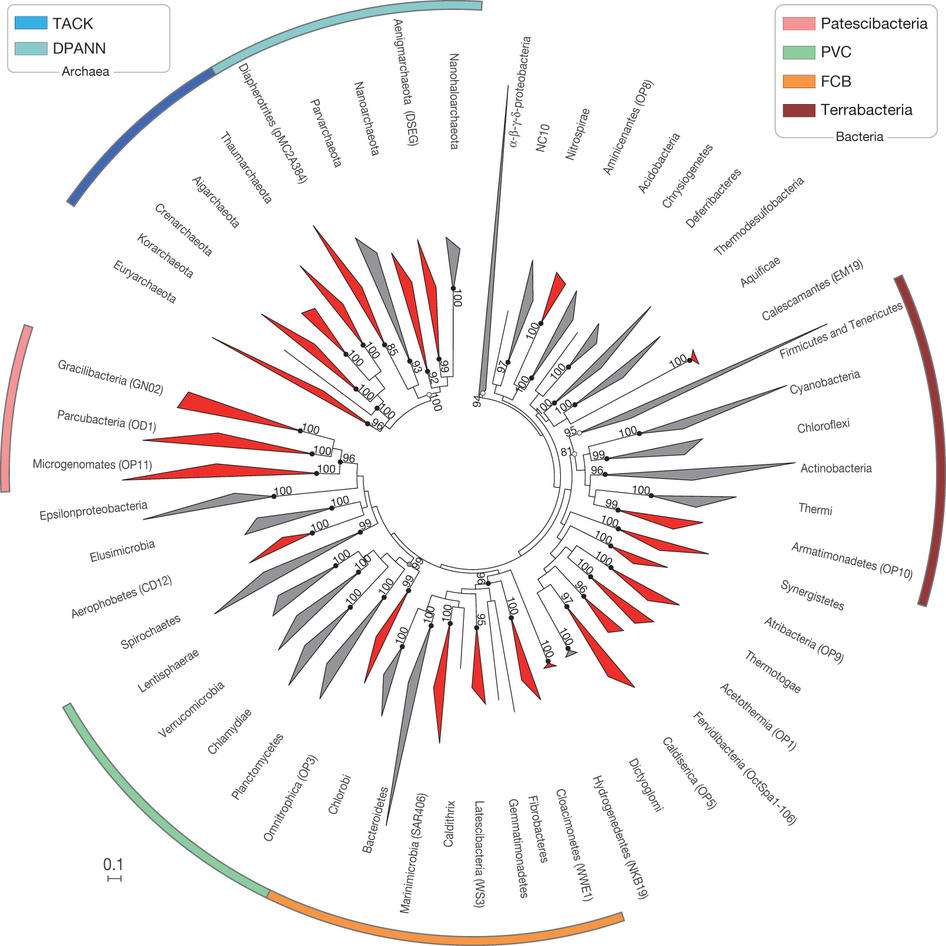Boldly illuminating biology’s ‘dark matter’
July 16, 2013

The phylogenetic trees are based on up to 38 marker genes and sequences are collapsed at the phylum level occluding subgroups such as the Geoarchaeota which clusters within the Crenarchaeota. Phyla containing SAGs from this study are highlighted in red. Superphyla (TACK, DPANN, Terrabacteria, FCB, PVC and Patescibacteria) are highlighted with colour ranges. The phylogenetic robustness (monophyly score) of phyla and superphyla is indicated by a small circle on the node: black circle (node was resolved in 100% of all tree calculations); grey circle (resolved in ≥90% of all calculations); light-grey circle (resolved in ≥50% of all calculations). Average bootstrap support values are provided for each phylum and superphylum when resolved.The two domain trees were independently calculated and are unrooted and the scale bar represents 10% estimated sequence divergence for both trees. (Credit: Christian Rinke et al./Nature)
“Microbial dark matter” is the pervasive yet practically invisible infrastructure of life on the planet, which can have profound influences on the most significant environmental processes: from plant growth and health, to nutrient cycles in terrestrial and marine environments, the global carbon cycle, and possibly even climate processes.
By employing next-generation DNA sequencing of genomes isolated from single cells, great strides are being made in the monumental task of systematically bringing to light and filling in uncharted branches in the bacterial and archaeal tree of life.
No comments:
Post a Comment